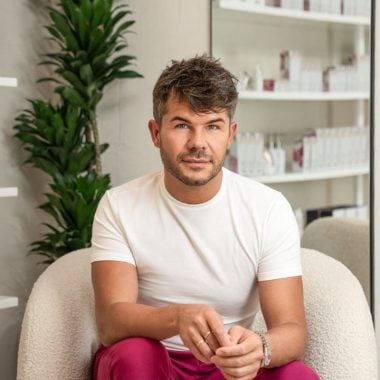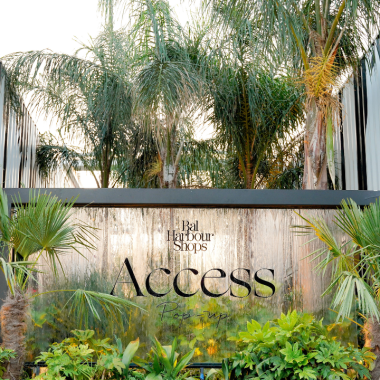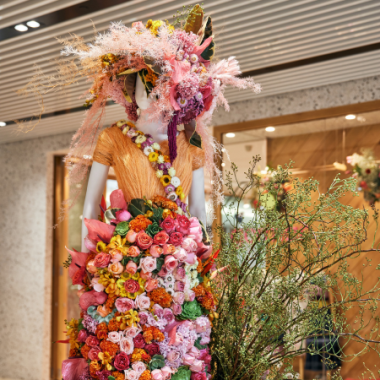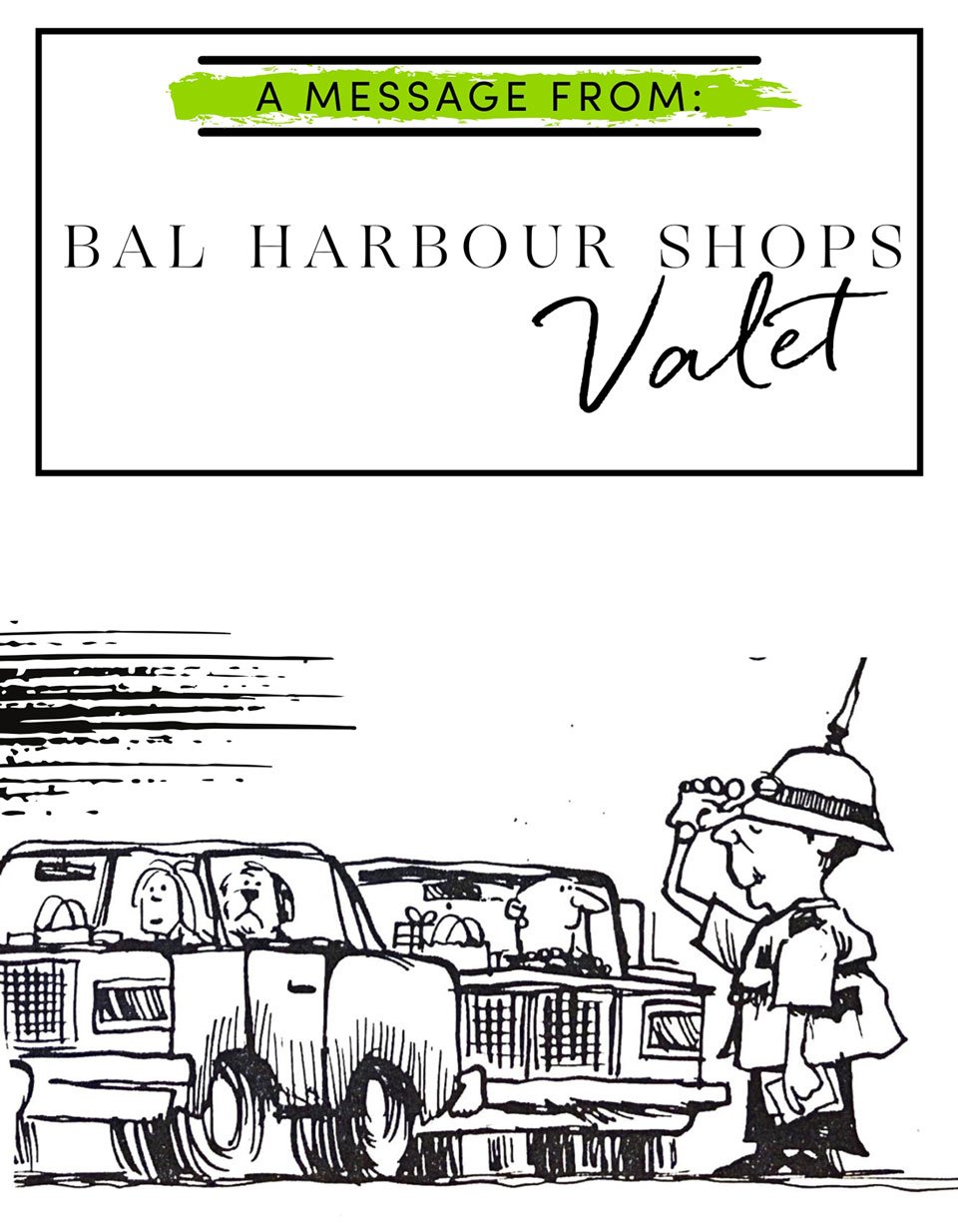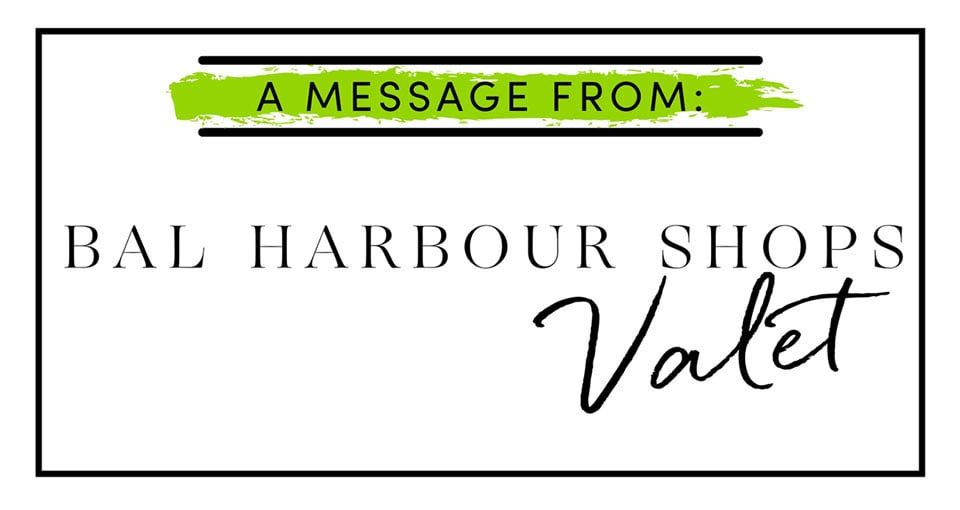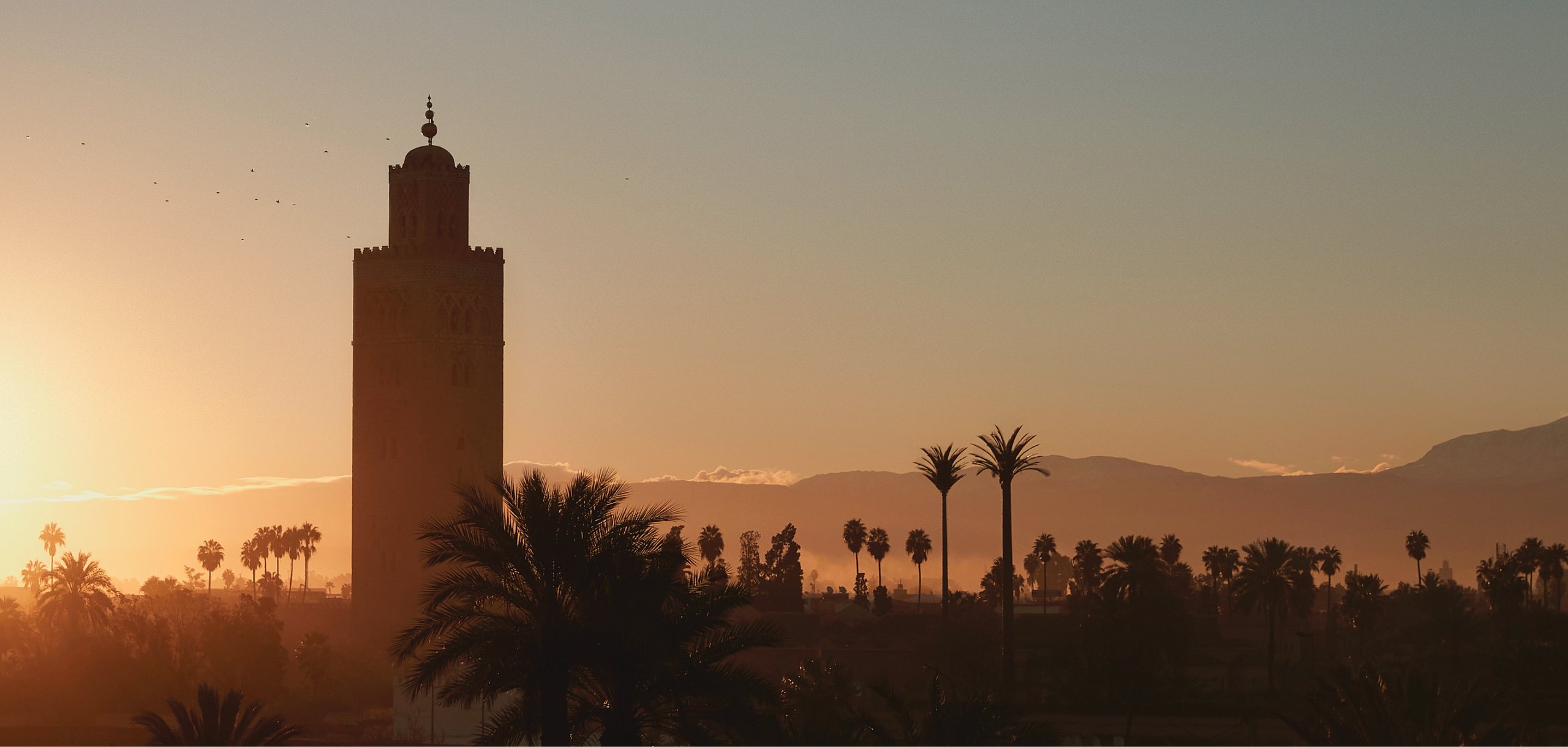
A glimpse of Marrakech’s Old City, as seen from the Royal Mansour; Photo by Isaac Ichou
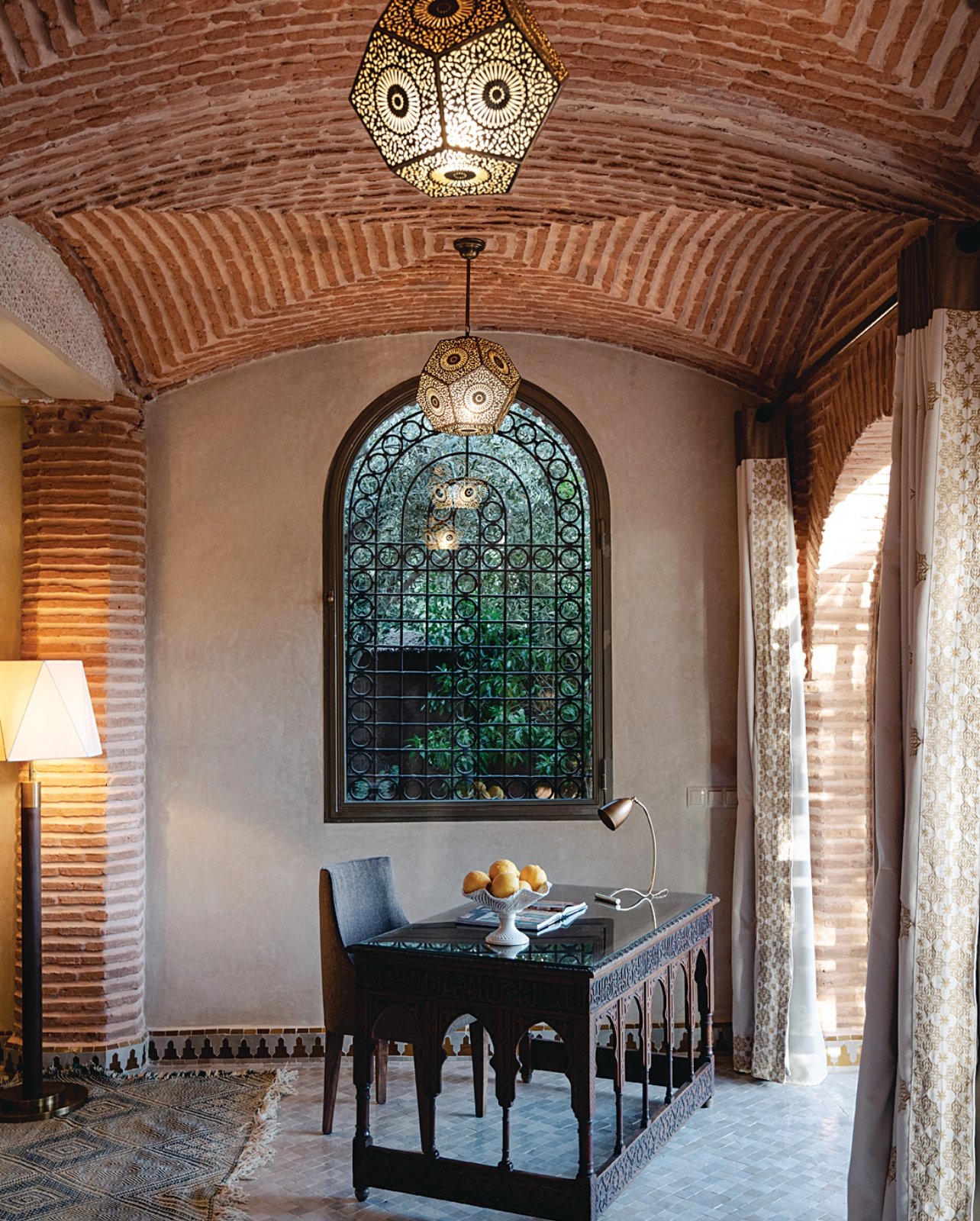
Olinto, a new retreat in the Atlas Mountains; Photo by Ebony Siovhan
By Mark Elwood
He only intended to buy a few bolts of fabric in Tangier—stripey, like the ones his friend the art dealer Peter Hinwood had showcased at his own home. But fashion designer Jasper Conran came away from a visit seven years ago with a much heftier purchase than some cotton canvas: a house. And not just any house, but the former home of Yves Saint Laurent and Pierre Bergé. And so, earlier this year, Jasper—son of the late design legend Terence Conran—welcomed the first guests to his reimagined Villa Mabrouka, a sister spot to L’Hôtel, the five-room, high-end Marrakech guesthouse that he already owned.
The Tangier property had been up for sale to help fund Foundation Jardin Majorelle, the foundation established in the wake of Bergé’s death, and Conran was smitten the moment he toured it. To him, the villa embodied the eclectic spirit of the port city. “Tangier is a place that has a foot in both Europe and the Arab world. It’s a heady mix, and a great combination. I could instantly see what it could be,” Conran says now of his putative project. “I wanted this to be like a 1920s hotel in Deauville, France.” Five years of gut renovations later, work that included building nine new suites and a rooftop terrace—not to mention updating its plumbing and utilities—it’s ready for the world to visit again.
His enthusiasm for the North African enclave right now isn’t unique. “Something has just clicked with Morocco. Everything seems to be materializing, and there’s so much demand,” says Marrakech-based travel specialist Alex Wix, whose forte is five-star trips here. “Every hotel is full, and so are the flights.” Look at other new boutique properties, like the nine-room Olinto, in the countryside just south of Marrakech: it’s a kindred spirit to Conran’s Villa Mabrouka in both style and substance, a high-design home reimagined by the Italian prince Fabrizio Ruspoli di Poggio Suasa, who lives next door.
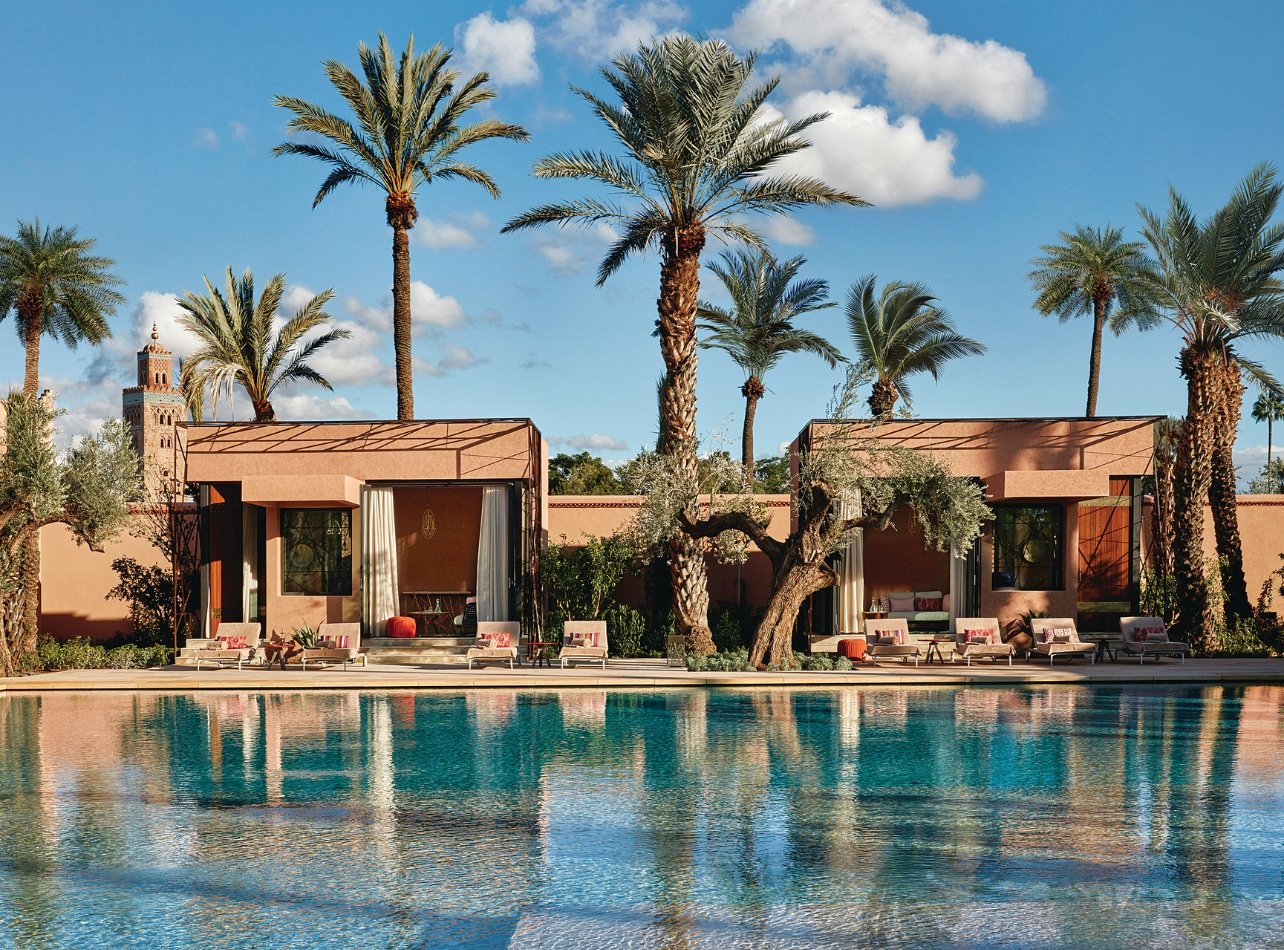
Poolside cabanas at Royal Mansour, Marrakech; Photo by Isaac Ichou
Nobu has just opened a 71-room property in Marrakech, while another stalwart of that city, the Royal Mansour, has just debuted in Casablanca, commandeering the former Le Meridien for an intensive makeover to emerge as the capital city’s first true five-star property. Fairmont added another Morocco location late last year, in this case, close to Conran in Tangier. And there’s more to come: the Four Seasons will open a coastal resort later this year in Rabat, on the site of a former military hospital.
The buzz around Morocco is in part down to a pop culture punch, according to Gail Leonard, an expat Brit who runs the events and sourcing firm Loune Concepts (Loune means “color” in Darija, Morocco’s Arabic dialect). “Every interiors magazine you pick up for the past few years, there’s been a Moroccan rug,” she laughs, before noting the impact of star power like Idris Elba, who married his longtime girlfriend in Marrakech four years ago. Both Daniel Craig and Harrison Ford have spent time in Morocco recently—to respectively film Spectre and Indiana Jones and the Dial of Destiny. “The media, fashion, and design worlds—they’re all getting in on it.” Leonard adds that the reason that the LGBTQIA community has always felt so at home in this Muslim country is that its cultural influences include those of the Amazigh (formerly known as Berber), a centuries-old, nomadic North African culture. “They have hospitality in their genes, and really embrace everybody. From the ground up, people are made to feel welcome.”
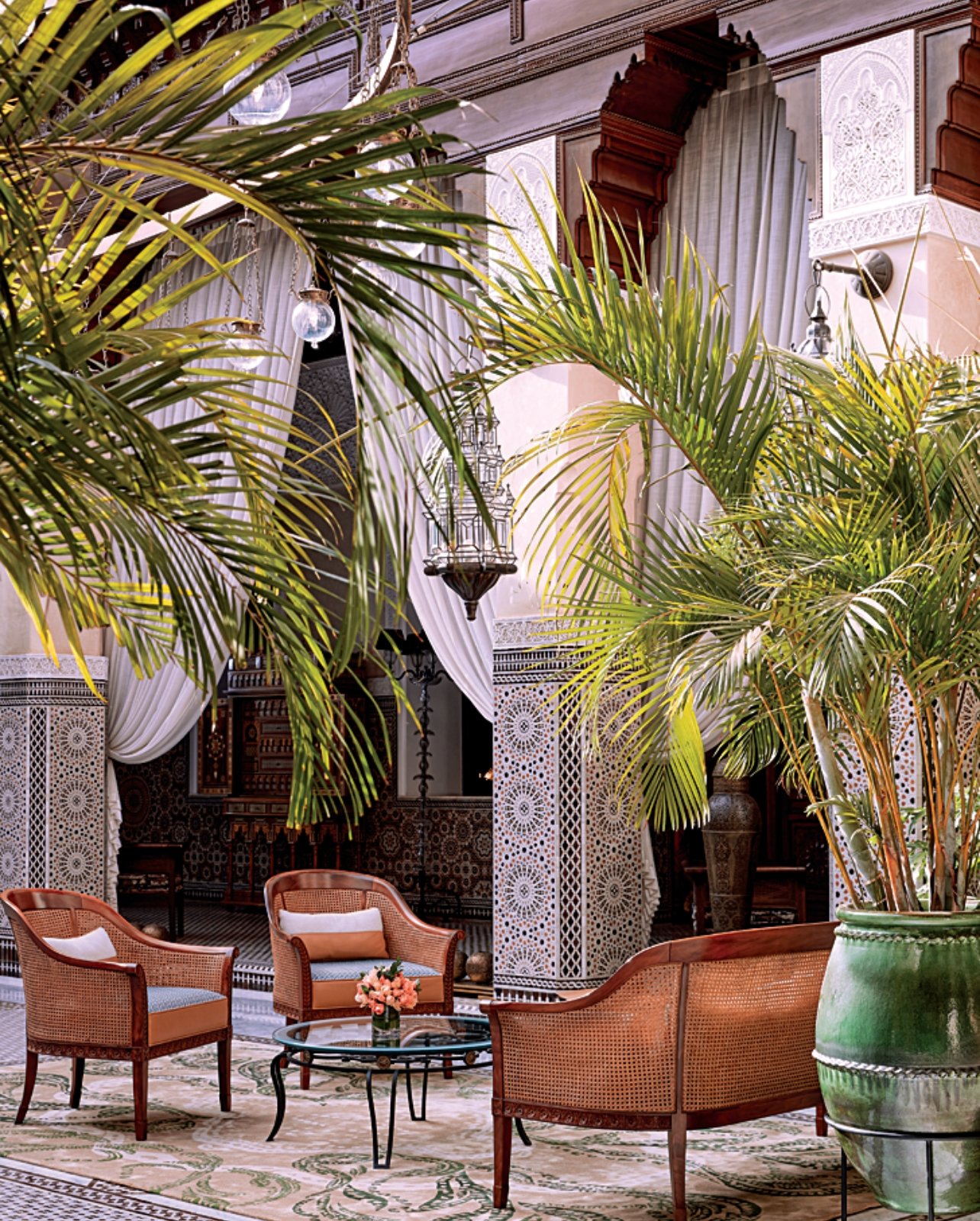
The lobby at Royal Mansour, Marrakech; Photo courtesy of La Mamounia
Certainly, that’s how Simone Mérette-Jara felt when she arrived in Marrakech in January. The 33-year-old Montreal native, a well-known sommelier and mixologist, came to Morocco to help establish an ambitious farm-to-table enterprise. She instantly felt the same openness and acceptance that first attracted Saint Laurent and his cohorts in the 1970s, including a particular infusion of younger folks like herself, rather than retirees keen to use Morocco as a place for VIP R&R in their golden years. “There’s this hype, this energy, right now, and it’s more and more vibrant, whether it’s museums, architecture, music, food, or nightlife,” she says of her new home; indeed, Mérette-Jara was so convinced of the viability of life here she bought a one-way ticket.
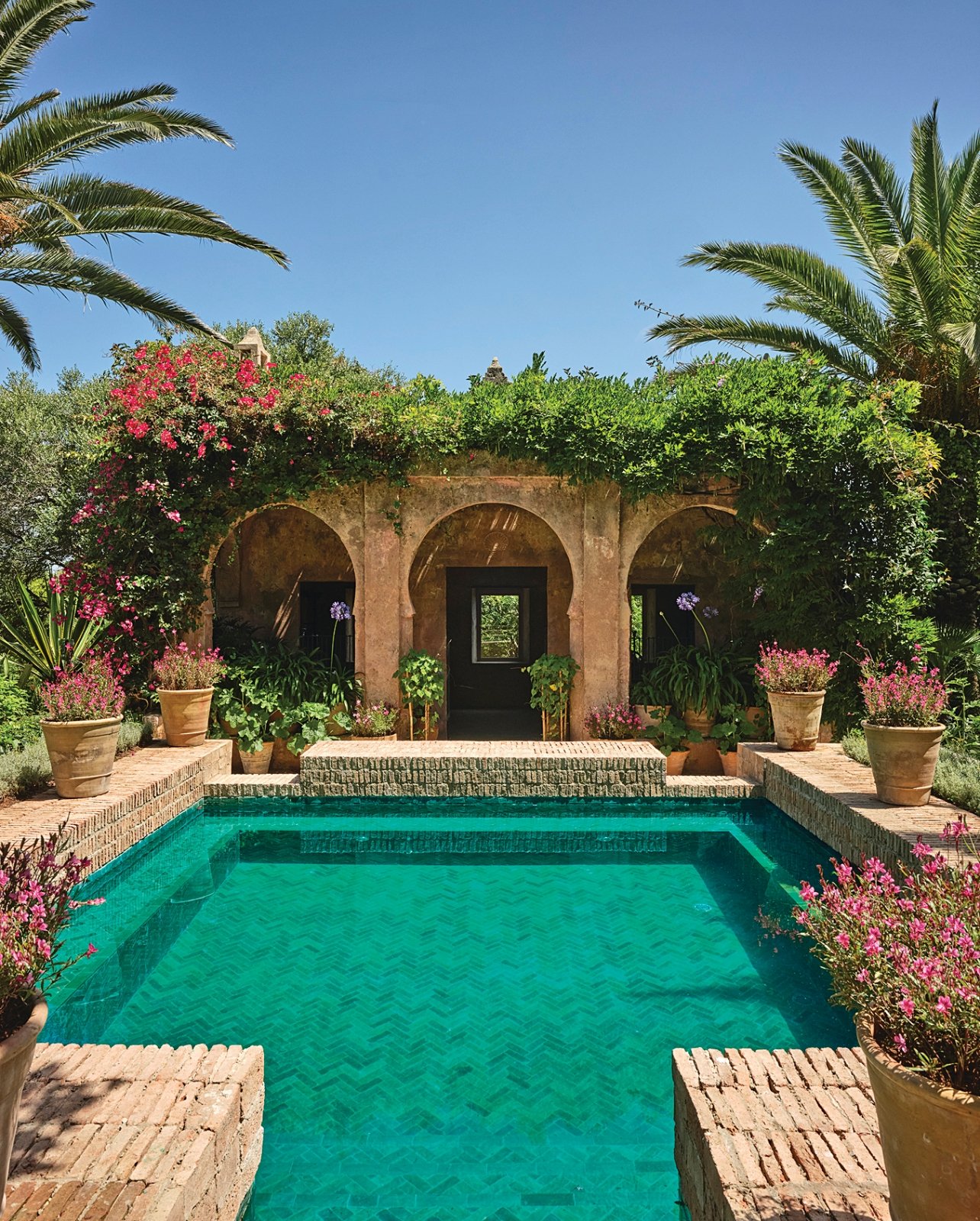
A small pool at Jasper Conran’s Villa Mabrouka in Tangier
Now, she’s managing an American-accented bakery, Blue Ribbon, the first opening in the complex she, Aziz Nahas, and Benjamin Pastor—her partners at the Napa Hospitality Group—have planned. It will be followed later this year by a wine bar run by Mérette-Jara and, next door, a farm-to-table restaurant, where she will curate the wine list and cocktails; there are impressive vineyards in and around Meknès in the northern reaches of the country, and Mérette-Jara hopes to tout the virtues of the previously overlooked grapes here. The allure of Morocco today, she emphasizes, is how it artfully straddles modern life and tradition. “Things are booming, but there’s a great reminder here that you can’t go faster than what life has put in front of you.”
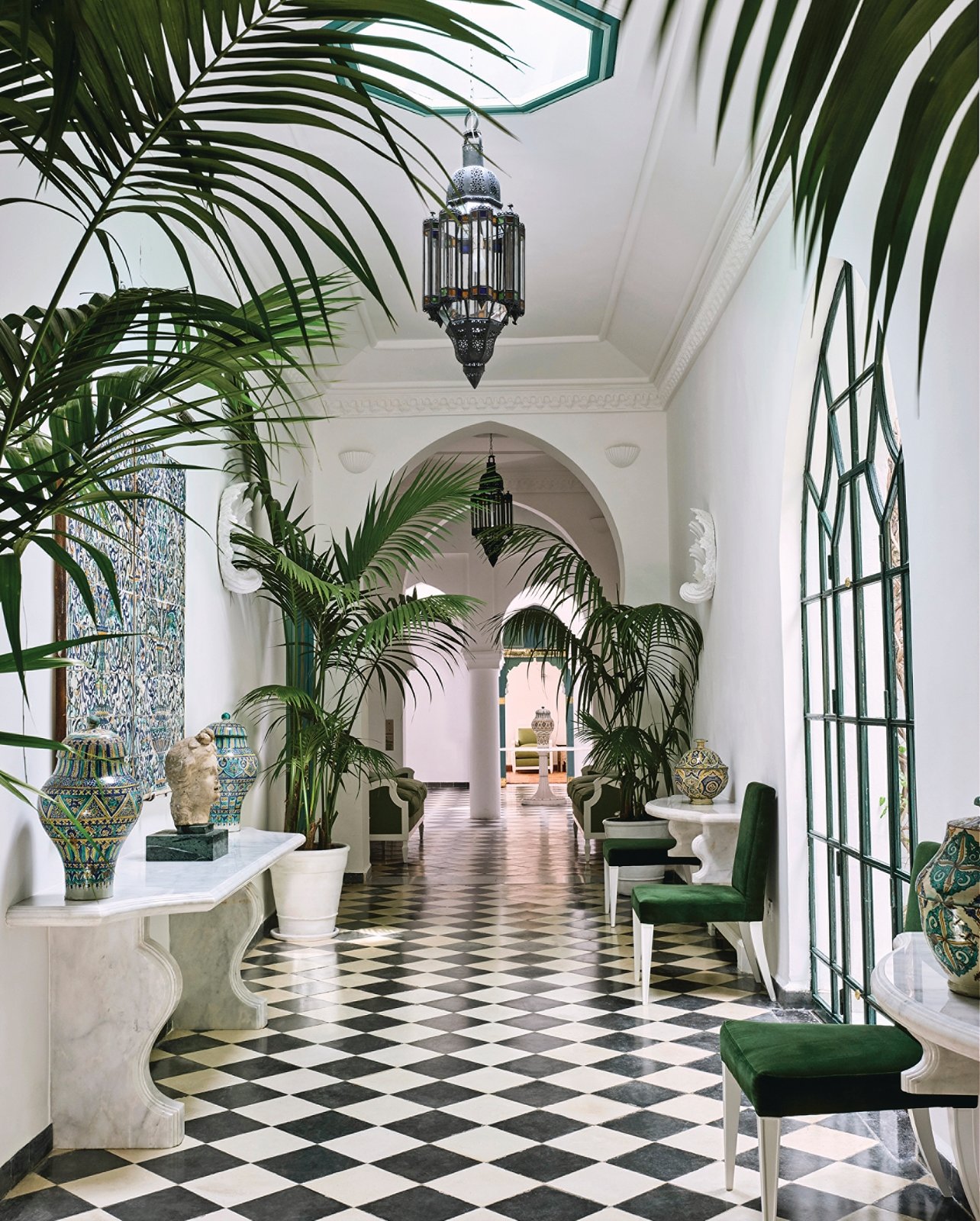
A grand hallway at Villa Mabrouka; Photo by Andrew Montgomery
Hadia Temli agrees. The Tangier-raised gallerist is one of the cutting-edge talents in Morocco; the daughter of an expat Italian and one of the country’s foremost antiques dealers, Temli was schooled around the world. Still, she relishes the distinctive culture of Morocco: “It’s a beautiful, colorful, timeless mess. One minute I’m driving my kids to school in a 4×4, and the next, someone with a donkey carriage has to cross the street and will wave contentedly, with a big smile,” she says. Growing up, Temli was connected to the country’s fashionista-driven heyday—Saint Laurent designed some of the costumes for her school plays but she relishes today’s sense of newfound vibrancy. She opened her project space, Siniya28, in 2017, and has earned international accolades for her gallery’s programming, heavy on female artists from the Arab world.

